It seems like my garden is turning into a mini dragon fruit farm! My wife and I started growing dragon fruit a few years ago as a fun experiment. We didn’t know much about it at the time, but after eating it daily during a trip to Taiwan, where it was cheap and plentiful, we were hooked.
Over the past year or so, we’ve started seeing more flowers and fruit. We’ve discovered we prefer the deep purple-fleshed varieties because they’re sweeter than the white-fleshed ones. We haven’t tried the pink-fleshed ones yet.
Now we’re getting more interested in the specific varieties we’re growing. Most of our dragon fruit came from Home Depot or random clippings from friends, so we’re eager to learn more about what types we actually have.
To explore this further, I joined a local Facebook group for dragon fruit enthusiasts in my area. Southern California's great weather is ideal for growing dragon fruit, so there are quite a few people involved in growing dragon fruit nearby. I found someone with an impressive collection of dragon fruit varieties, and we met up to chat about growing techniques and the different types of dragon fruit. I ended up buying a few clippings from him and even got a couple of smaller ones for free!
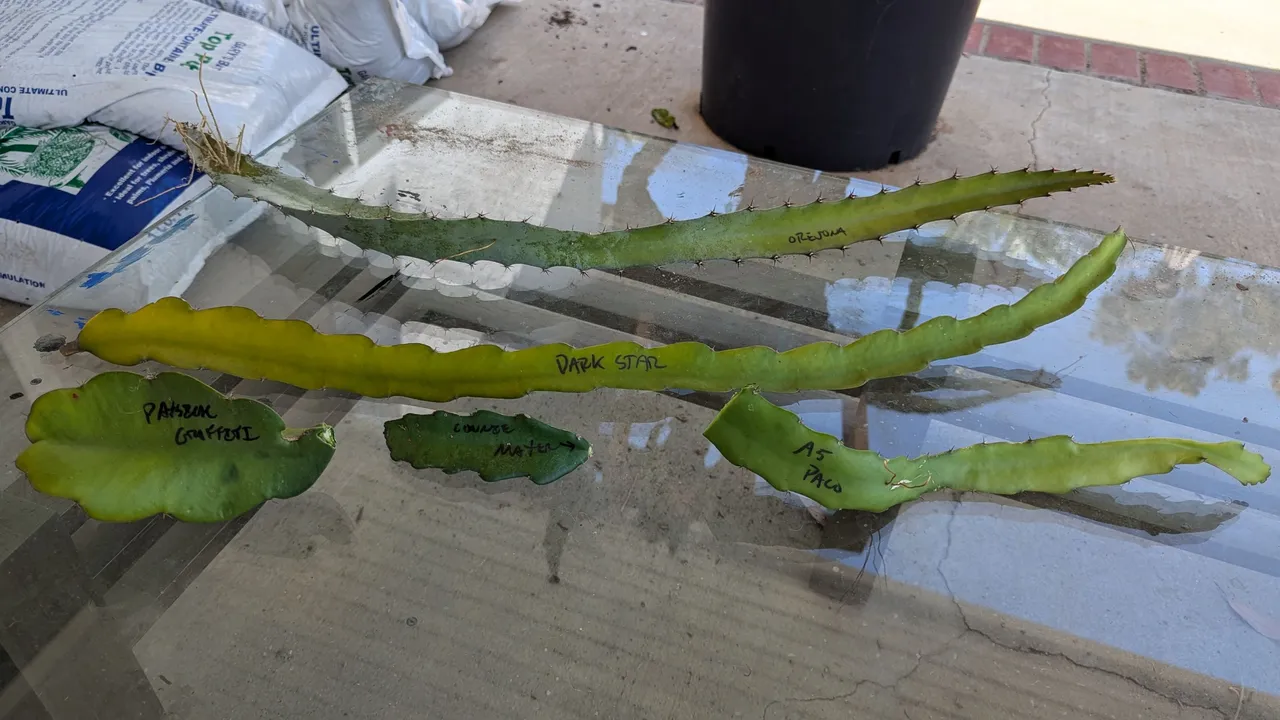
Out of the five clippings I received, two just needed a day to scab over since they were cut at the node, which is the space between the fleshy parts. The other three weren't quite ready yet. The smaller ones need a bit more time to scab over. One clipping, the Asunta 5 “Paco”, however, was cut at the thicker part rather than the node, so I need to wait for that one to scab over completely before transplanting it into the soil to prevent it from rotting.
I want to take my time to get it right because the Asunta 5 “Paco” is one of the more sought-after varieties, known for its exceptionally delicious fruit.
We’re trying a new planting medium recommended by Gary Matsuoka. He suggests using all inert materials because many commercial soils contain compost. Over time, as the compost breaks down, it can lead to issues like root rot and make the soil muddy, especially for plants that will stay in pots long-term.
Right now, our cuttings are in that soil, and once they start to root, we’ll transplant them into larger pots with the same planting medium called Gary's Best Top Pot. We’ll then add some compost and fertilizer on top, water it, and let it break down and integrate into the medium, mimicking natural processes.
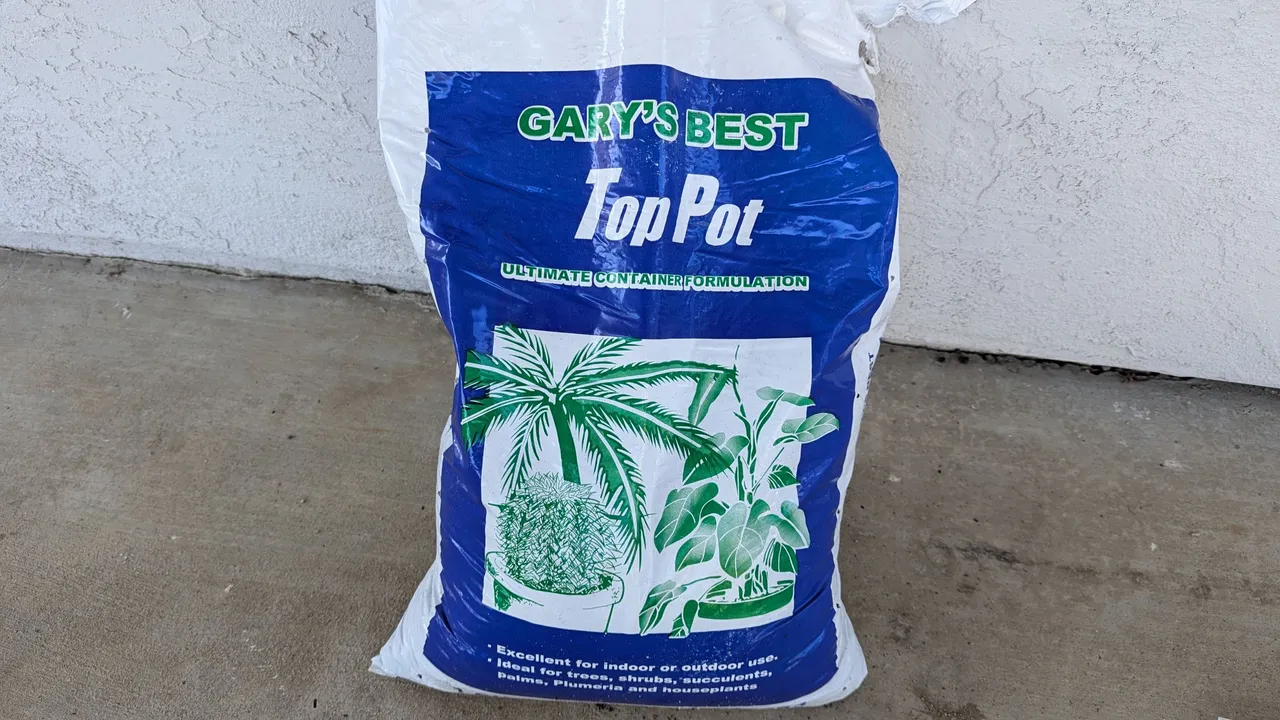
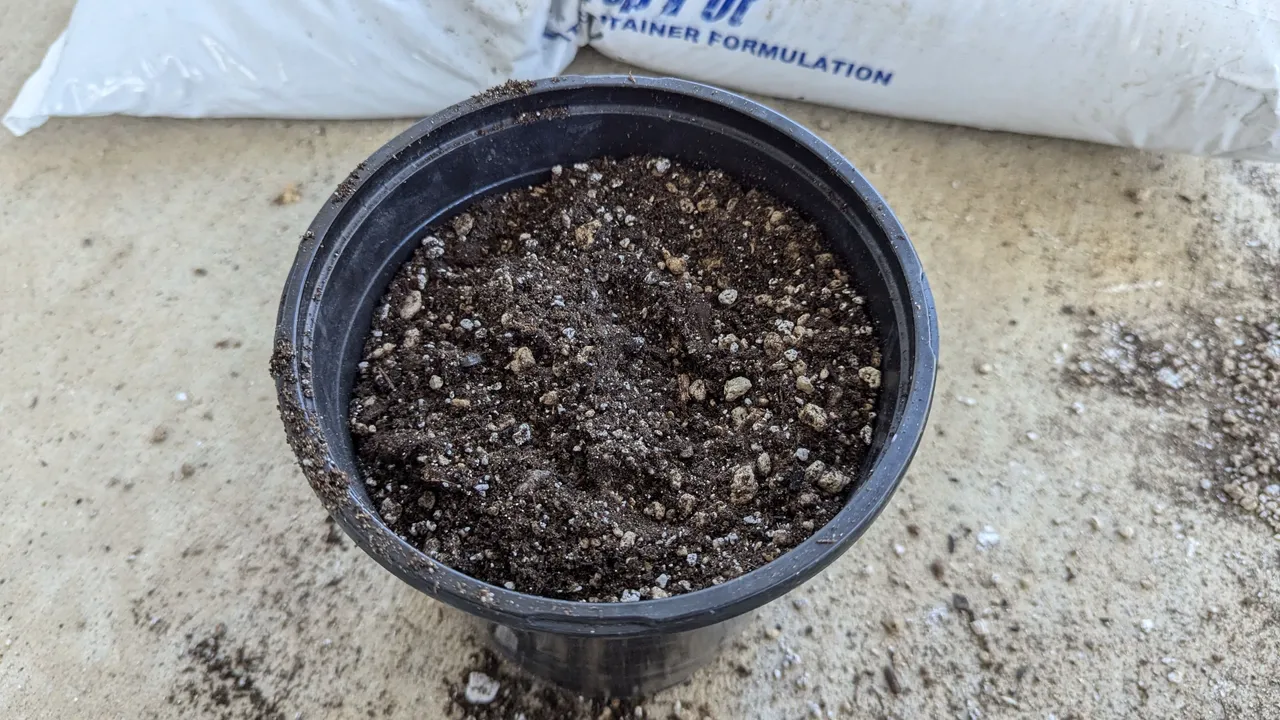

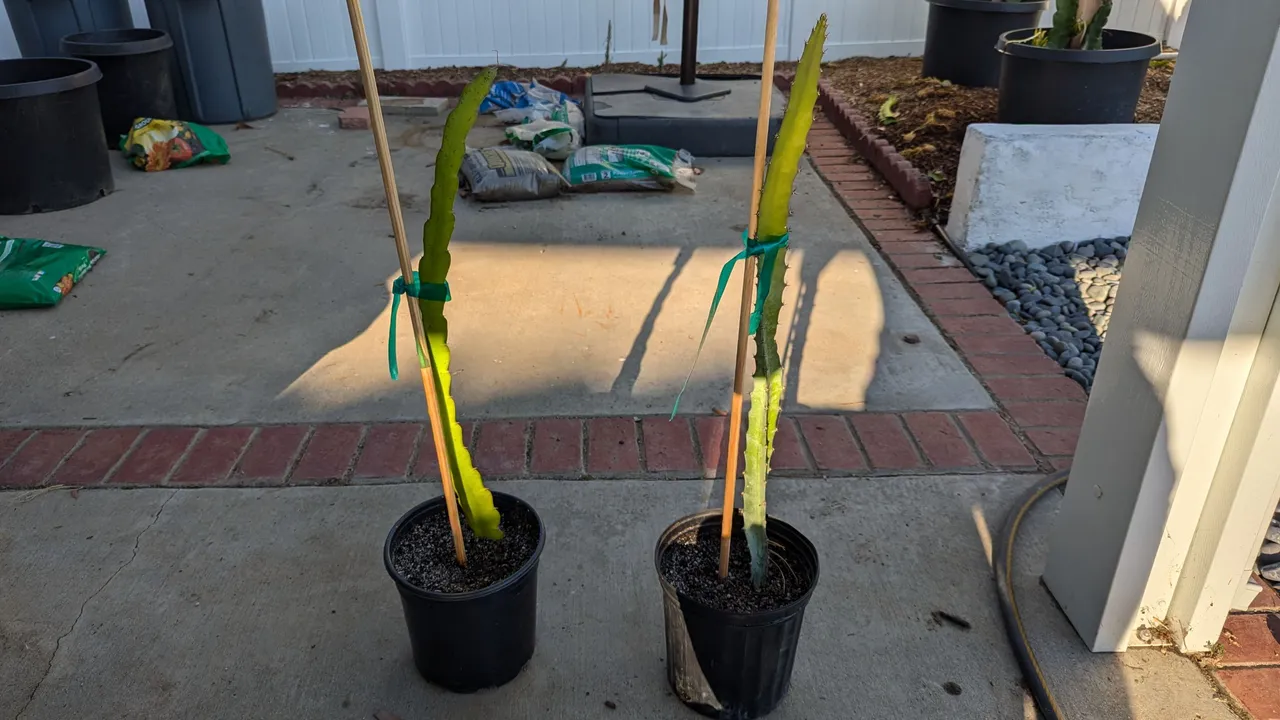
If these cuttings do well, we might consider replacing the soil in our current dragon fruit pots. However, that could be a challenge since the plants are likely root-bound. We had planted four in each 20-gallon pot, and they quickly became overcrowded. For future pots, we plan to plant just two per pot to see how they fare.
Currently, our dragon fruit plants are producing a lot of flowers, and we’ve finally started to see plenty of fruit setting. Now, we're just waiting for it to ripen.
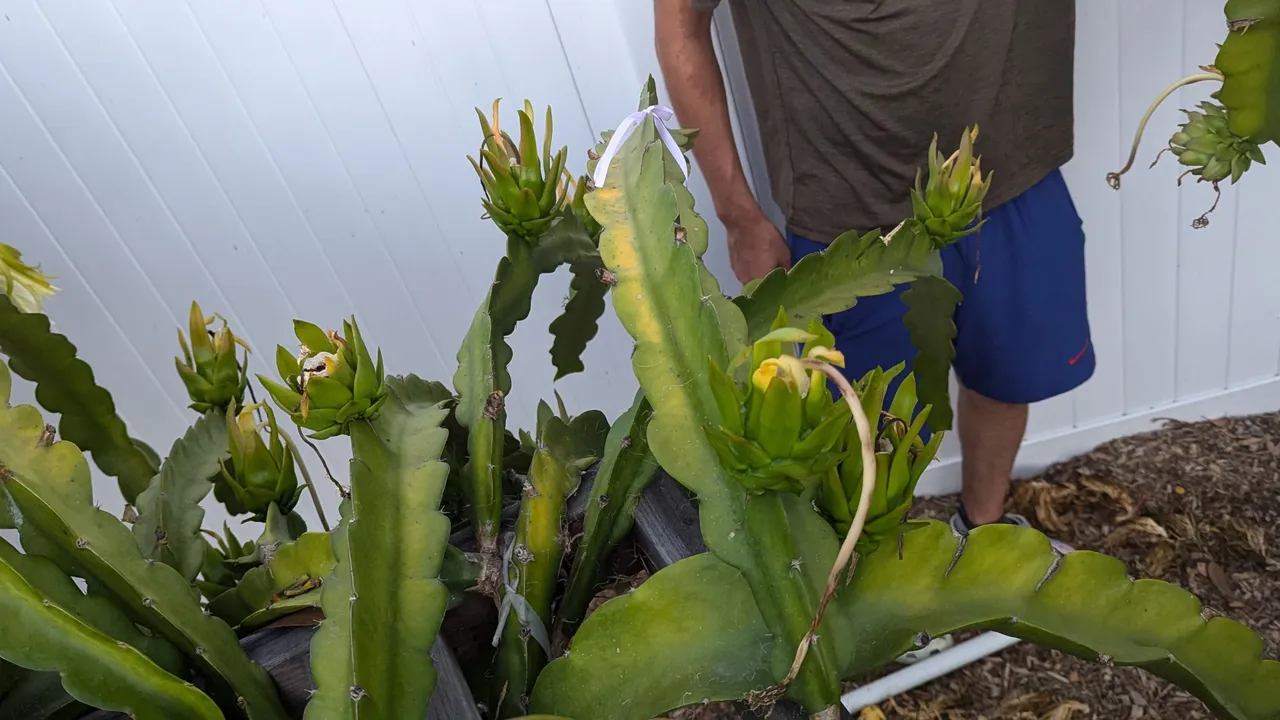
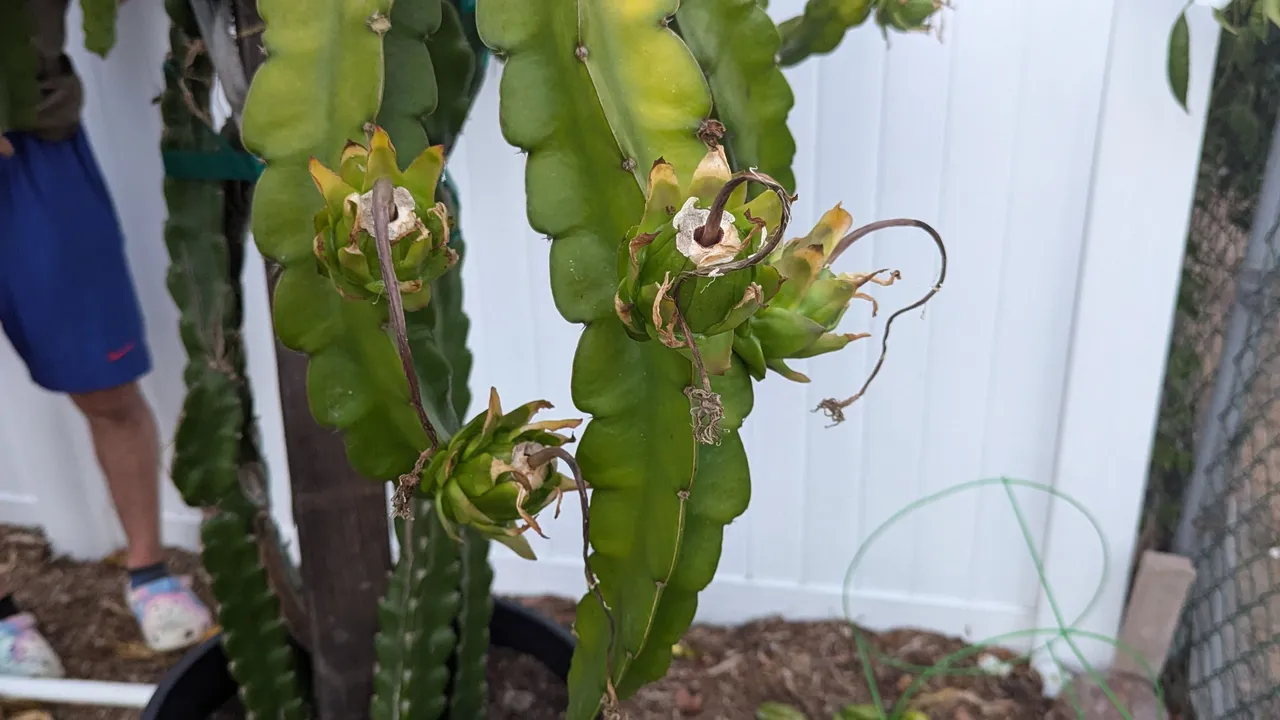
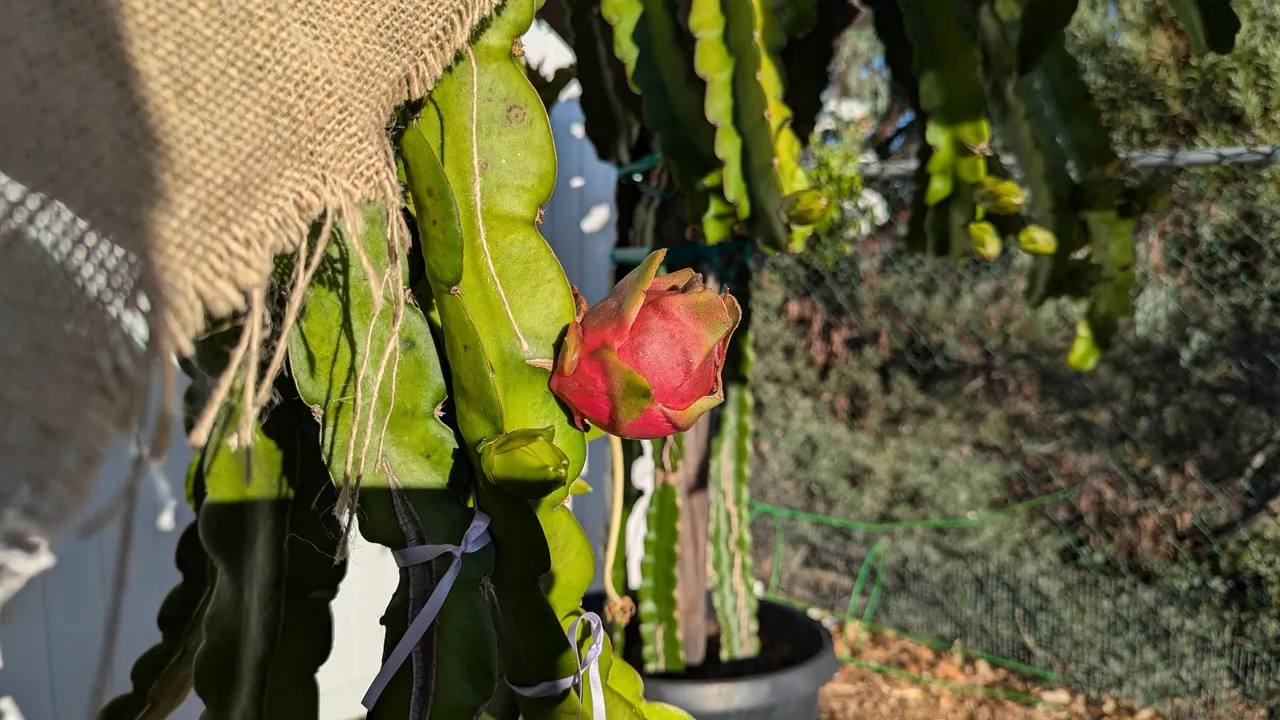
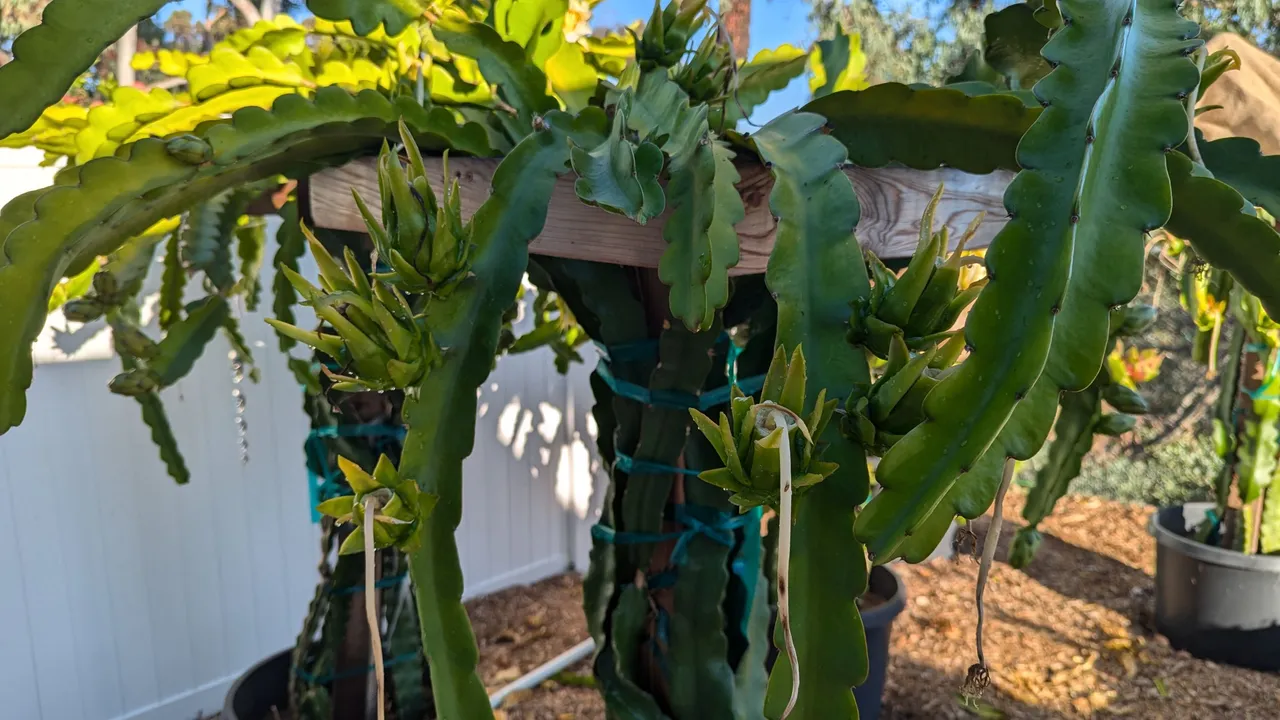
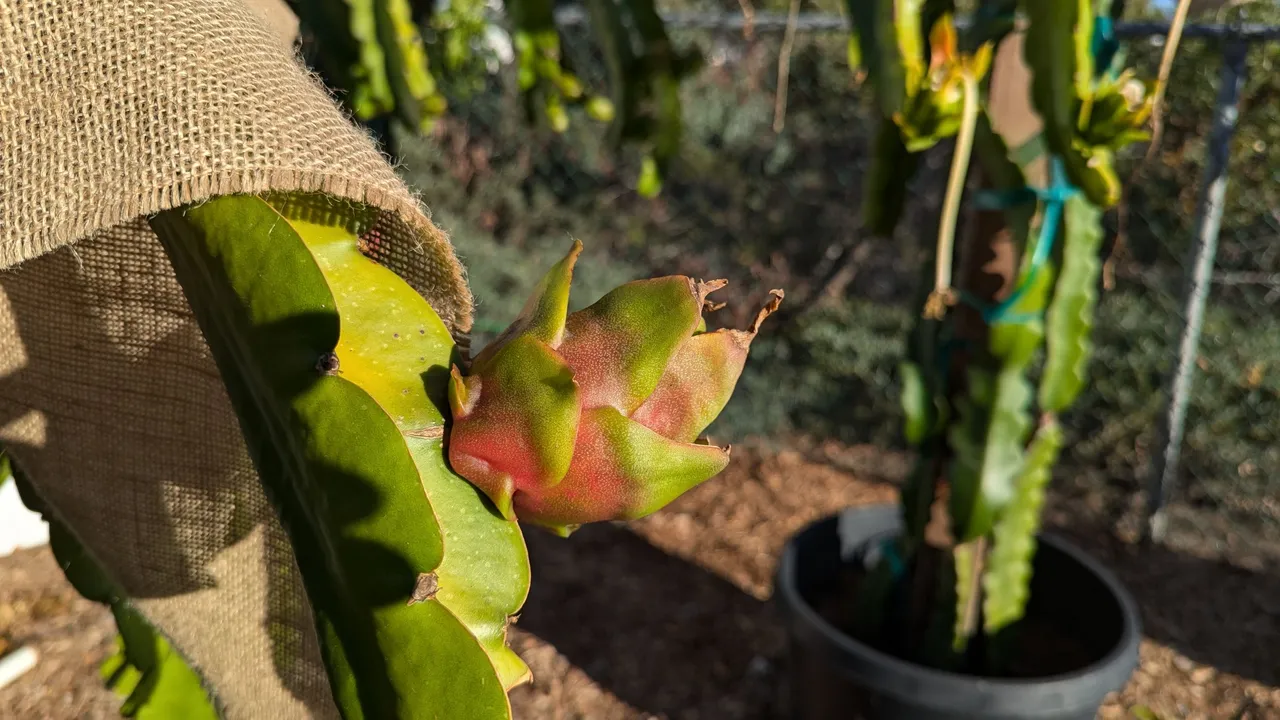

I really wish we knew the varieties of dragon fruit we have, but unfortunately, we don’t. We’re giving the white-fleshed dragon fruit one more try this year. Last year, they had almost no sweetness and barely any flavor, which might have been due to the extra rain affecting the fruit. If they still don’t turn out well, we might replace them with varieties we prefer.
If anyone has any favorite dragon fruit varieties, I’d love to hear about them. If they sound great, I’d be interested in getting some cuttings to grow my own. Please let me know your preferences!